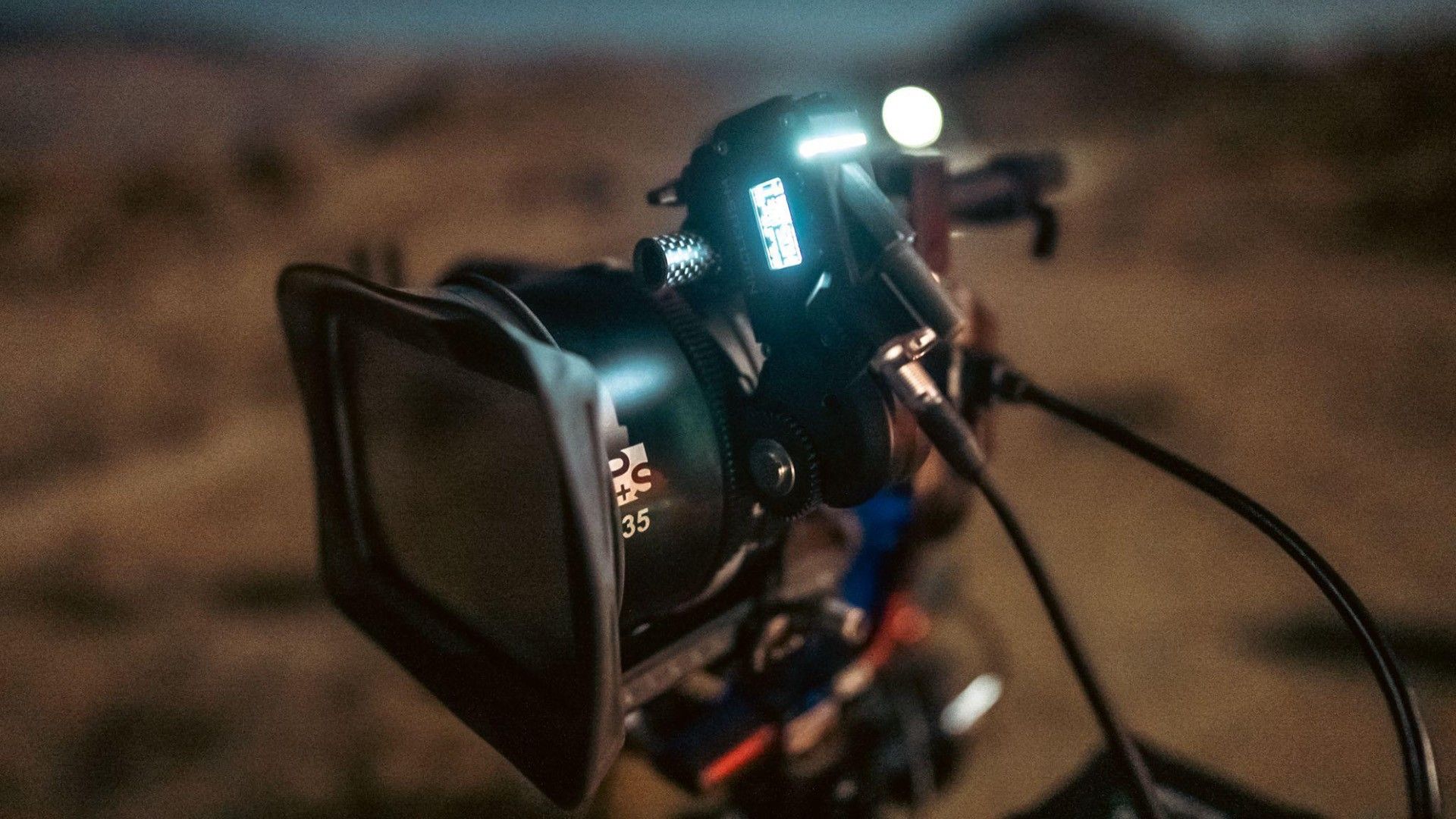
If you had to shoot a commercial or film by moonlight, would you be able to? Director Jono Seneff pulled it off.
Back in February 2022, we mentioned a super cool Tesla spec commercial in our Hawkeye VFX article. It was created by Seneff and his producing partner, Mehmet Gungoren. The two recently put together another project, but this time, they set their sights on pushing the boundaries of two Sony Alpha cameras to demonstrate their low-light capabilities.
What began as a short film evolved into a branded content piece. A new spec commercial, if you will.
However, this one was going to be shot using only moonlight and firelight to light the project. Here’s how they did it and what you can learn from their workflow.
First, give the final product a watch.
Conceptualizing the Project
Built around the idea of the only natural phenomena (so far) to be able to capture light and time itself, Seneff created a spot where a photographer stood in the blackness of night and took a picture of a black hole.
“Lit by the light of a supermoon and a campfire, we used the astonishingly sensitive Sony a7S III and FX3 to capture the poetic parallels between black holes and the act of photography,” Seneff said.
The look for the spot came from Seneff’s own idea about the look and feel of nighttime exteriors in film and television.
“In movies and TV shows I grew up watching, the nighttime exteriors always looked overlit and completely fake. I remember thinking at a very young age, 'Doesn't anyone think this looks real?'”
The truth is, they don’t. For creative work like narrative film and television series, the idea (for the most part), is to convey story above image. But that sometimes breaks the all-important immersion viewers are seeking. So this project was an attempt to make night feel how Seneff saw it with his own eyes, which is where the two Sony cameras came in with their ultra-sensitive sensors. What Seneff saw, he could now reproduce.

Testing, Testing, Testing
But to create the vision he had in his head, Seneff needed to see what the Sony Alpha line could produce. And this started with taking A7S III to Red Rock Canyons and Fossil Falls, both in California.
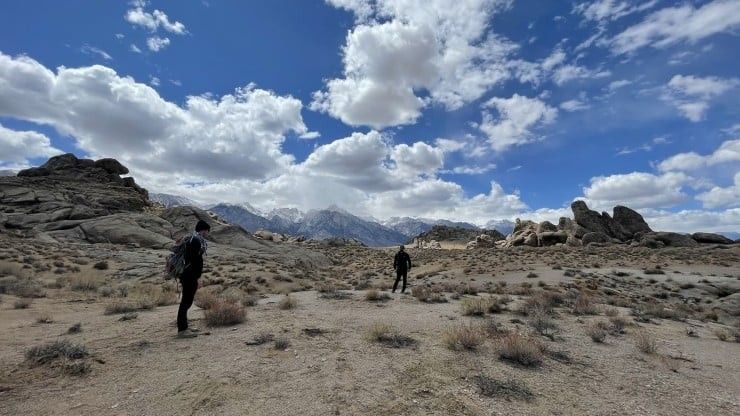
On these trips, Seneff and his team learned two important things. The first is "how alive the night sky is when we shot as a video instead of the still images.”
It wasn’t the astrophotography he was used to, but a living, dynamic image.
He said that he could “feel the unique personality of each star as the dimmer ones twinkle in and out of existence while the bigger ones dominate the image in recognizable constellations.”
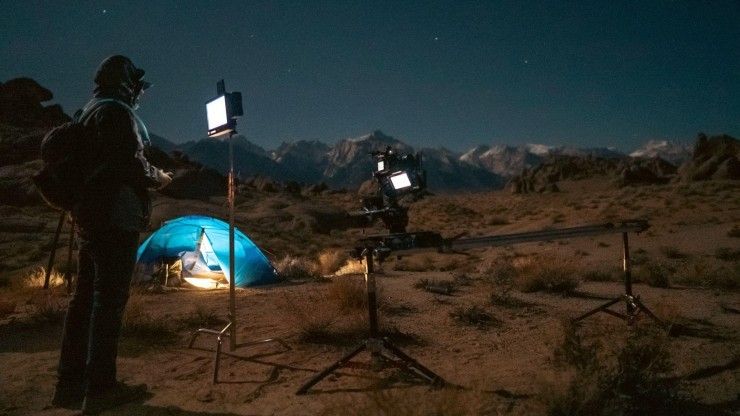
While this might have been a boon to his creative vision, the second thing Seneff learned was an obstacle to overcome. Even with Sony’s incredibly sensitive sensors, he needed light.
“Even night vision goggles still need moonlight to work effectively,” Seneff said, which is why the team began searching for a supermoon.
No, this isn’t a moon orbiting the planet Krypton, it's actually just the moment that a full moon coincides with a lunar perigee (the point in the Moon's orbit where it is closest to Earth), making it even brighter than the average full moon.
This didn’t leave much time for Seneff to get this project shot. In 2022, there were only three supermoons. But for their night shoot, the team got lucky with a cloudless night in California’s Alabama Hills. Albeit a cold and windy one.
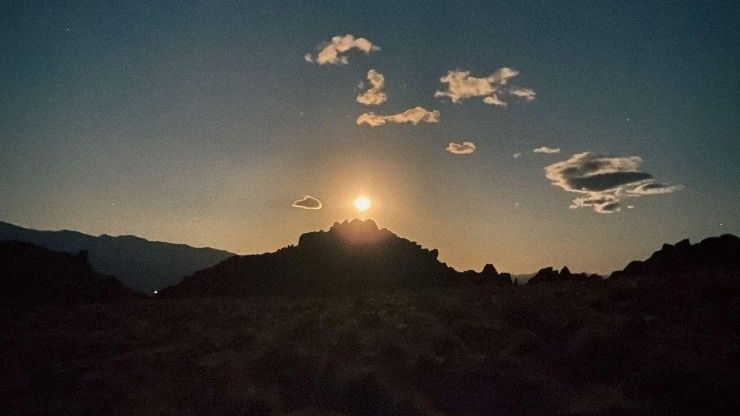
Lighting with Moon and Fire
While there is quite a bit of VFX work in the spot, “the fundamentals were all captured there on set in the moment with natural light,” Seneff said.
Each shot was framed so that the supermoon would constantly act as a backlight on the talent. For their key light, Seneff and the team used a literal campfire. In the final edit, you can see its light bouncing wildly in the wind.
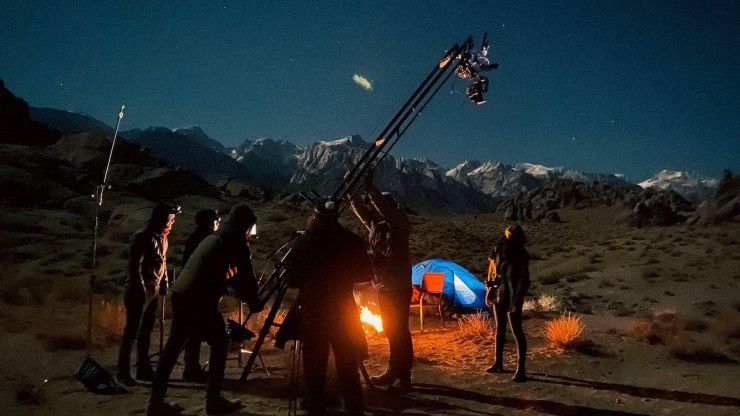
But some shots required the fire to be in the frame, which posed a problem. With the cameras cranked up to a ridiculous ISO, the campfire would be overexposed. To combat this, Seneff shot one take with the fire properly exposed, and then another identical shot with the exposure cranked all the way up to capture the stars.
These two were blended in post, which is somewhat similar to how Jordan Peele achieved his incredible day-for-night sequences in NOPE.
Building the Edit
With all of their footage in the can, it was time to build it all out with the help of some VFX. Everything the team shot was recorded in ProRes RAW using an Atomos Ninja V. This was then conformed into Slog3 and denoised using DaVinci Resolve.
“Post-production was a deep dive into the physics of black holes with Stephen Burchell [VFX supervisor and lead artist], along with a shocking amount of research that went into visualizing what a mini-black hole would look like in a terrestrial setting.”
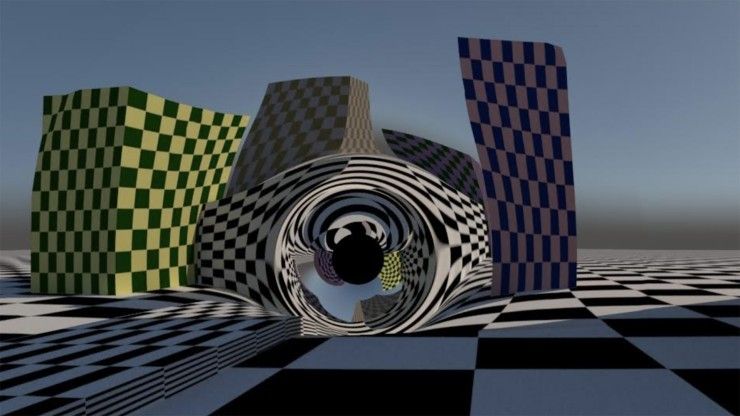
The sequences with the eye close-up and black hole were created and elevated with VFX, with the latter using a background plate shot on location. Then the team used some tools from the land of video games.
“For the opening shot of the black hole in space, [VFX artist] Gioele Muscolino created a setup in Unreal Engine that allowed us to quickly iterate our framing and movement.”
The Technical Side of Things
To capture all of this footage, the team used two cameras, the Sony A7SIII and Sony FX3. These were paired with vintage Canon K35 that were rehoused by P&S Technik. While anamorphic lenses were considered, they would have added extra work for the VFX shots.
Seneff said that “the K35s are fast and bring their own personality to the table without being overwhelming.” But two extra lenses helped complete this project—a Laowa Probe lens for the eye shot and Sony 90mm Macro for when the talent was looking up at the stars.

What Can We Learn?
So, with all of this insight, what can we learn from this project? First, technology has come to a point where unique visuals are no longer out of reach, even for budget creatives. We can see how the Sony FX3 is not only a robust workhorse, but it’s also versatile enough to create footage that other cameras will struggle to attain. Both the Sony a7S III and FX3 are also extremely affordable.
The VFX team also used Unreal Engine, which is free and has slowly been growing into a filmmaking staple thanks to shows like The Mandalorian.

Second, it’s important to consider what your tools can do outside of their “proper use.” While Sony cameras can record at an insane ISO, no one would be crazy enough to do it, right? But Seneff did, and his work is proof that crazy might just be the answer. He even mixed and matched three different lenses to get the images he needed.
But, no matter how small or technical a project is, it always begins with a story. Seneff could have just shot some footage in the desert and called it a day, but his spot not only conveys a feeling for how he sees the world but inspires creatives with the story it tells.
Beyond all the VFX, cameras, and lenses, the story will always be king.
What did you learn from this spot? Let us know in the comments!
Your Comment
3 Comments
Resolve doesn't accept ProRes Raw. There must be a missing step about the work in post.
December 18, 2022 at 9:20AM
Yup. There are some holes in their workflow description.
One might guess that perhaps something like Final Cut Pro or Apple Compressor converted to ProRes 4444 but if one were using FCP one could apply LUT and use Neat Video to denoise before sending to Resolve.
How was the conversion done for a file compatible with Resolve?
Was a lut applied during the conversion process?
Was it edited in FCP and then Resolve used for finishing/grading?
Was VFX work done with Fusion or some other programs?
I wish the author would include a more accurate post-production workflow.
December 23, 2022 at 1:08PM
I adapt a Nikkor 55mm 1:1.2 to an A7SM2. While its not the sharpest lens Nikon ever made, the low noise nighttime images my Sony captures with it are incredible. Pairing any super fast glass with this series will give you and unbeatable available light night camera.
December 23, 2022 at 2:56PM